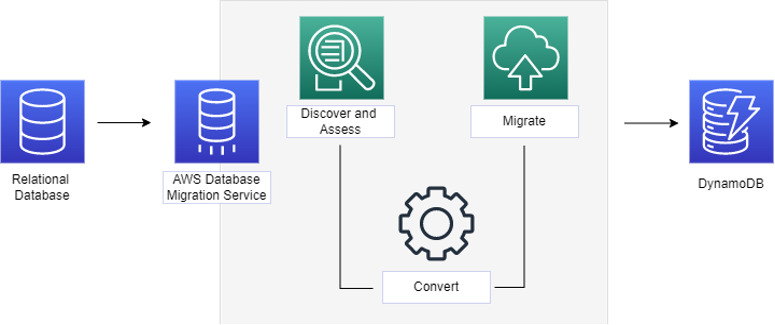Migrating Relational Database to non-Relational Database
Executive Summary
A public sector client was experiencing performance issues with big data, along with managing the growth of data being collected. This meant troubleshooting performance issues due to increases in the complexity and amount of data being stored. Initially, a traditional relational database was more than sufficient when it came to functionality, but with changing data needs a new approach was necessary. This is when the business decided to reach out to Cloud Solutions Zone for help in choosing a better option using Amazon Web Services to migrate their data to a non-relational database.
Changing Business Needs
Using a relational database was becoming expensive and time consuming to manually scale and organize. In the case of the public sector client, AWS Aurora was being used which is compute intensive and performance is decreased at the internet scale. With the increase in data, it was also becoming costly to run the database due to having to add several instances to handle the workload. Those accessing the database were often unable to login due to service disruptions, which meant less efficiency in dealing with submitted tickets and an overload of open tasks. It was soon realized structured data was unnecessary for business needs and the Aurora database was becoming more complicated to manage due to the growing variety of data and number queries being made. Something had to change to align with business needs. Thankfully, Cloud Solutions Zone was able to design improved architecture and migrate the client’s data in a timely way with very little downtime using the AWS Database Migration Service and DynamoDB.
The Challenge: Relational vs. Non-Relational
Both Amazon Aurora and DynamoDB are highly secure, scalable and managed databases, therefore all administration and storage requirements are taken care of by AWS in accordance with business needs. The major difference between the two services is that Aurora is a relational database, and DynamoDB is a non-relational SQL database. As far as storage goes, Aurora supports up to 128 Terabytes while storage processing is handled in the background to decrease latency. Data is normalized and joins are required for multiple tables, which can slow queries and add to costs. Scaling involves replicating Aurora clusters, which can also be costly when workloads increase. On the other hand, DynamoDB supports petabytes of data and flexible data models. Data is stored in a way to optimize queries, so processing is typically very fast. For perspective, DynamoDB can handle up to 10 trillion requests per day and almost 20 million requests per second. Scaling is done horizontally, which can save on costs by adding servers rather than upgrading to a larger server.
Choosing a Database
It was determined that Aurora was a great choice for more structured and predictable data needs and these weren’t requirements for the client. The Aurora option was also becoming much more expensive since scaling requires replica clusters and with growing needs, more replicas were needed. Overall, fast queries optimized by an unstructured approach to storing data simplified access, cut costs dramatically, increased performance and made DynamoDB the clear winner for the business.
Our Solution: Using AWS Database Migration Service
Using the AWS Database Migration Service was efficient, both in cost savings and time. After following database migration best practices from CloudSolutions.Zone, the public sector client was able to start the process of migrating to DynamoDB with ease. The migration of the Aurora database to DynamoDB started with a few mouse clicks, with some minor settings adjustments (see diagram). The company could also leverage paying only for the computing resources necessary during the process.

Business Outcomes
- The public sector client was able to get a handle on their data and provide access to employees and end users in a faster, more cost-efficient way.
- Clients are now able to access data with increased performance and reliability.
- The client is able to use advanced analytics seamlessly, improve transparency and efficiency and offer better service with the help of AWS.
- Best of all, millions of users are now served with millisecond latency.
- Even more, Cloud Solutions Zone was able to recommend further AWS services for future growth and data management.
About CloudSolutions.Zone
CloudSolutions.Zone specializes in getting big things done in a small budget.
Connect with Us for your data migration challenges. Cloud Solutions.Zone is a Canadian-based cloud consulting service provider for IT solutions. We specialize in sophisticated and challenging cloud system integration projects such as cloud-native applications, cloud security, AI/ML solutions, data migrations, and cyber security solutions.
